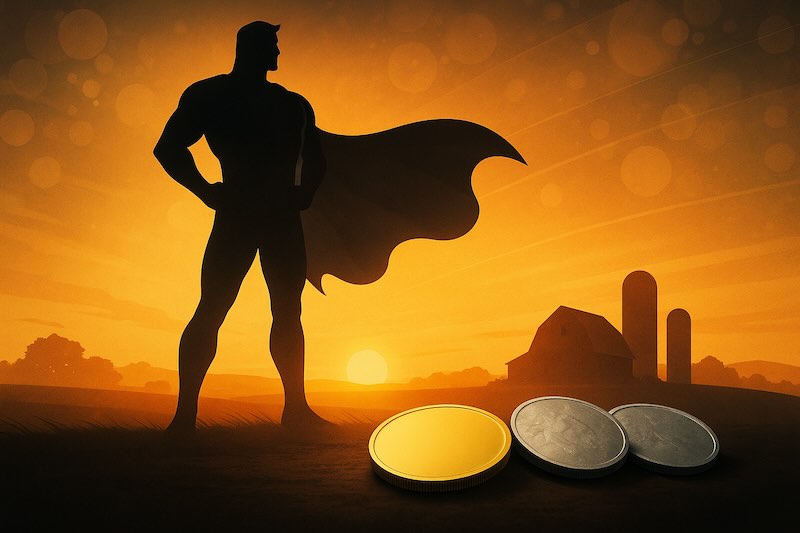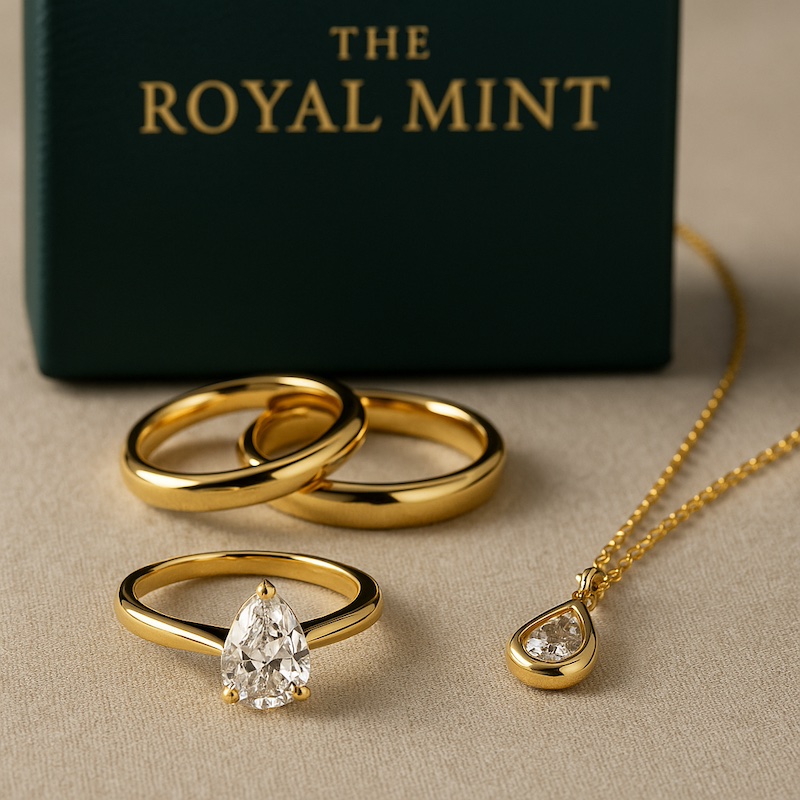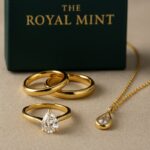TL;DR: The U.S. Mint debuted a three-year Comic Art program with a Superman coin (2025-W Proof $50, ½ oz .9999 fine gold) plus 1-oz and 2.5-oz .999 fine silver medals. Day one was a flex: 5,508 gold coins sold; 30,272 of the 1-oz medals; 8,207 of the 2.5-oz medals—supported by 9,782 subscriptions across the program. No ABPP allocation. Premiums are real. Choose based on collecting goals, not just FOMO.
The hook: Pop culture just crash-landed in modern U.S. numismatics
If you think modern Mint issues are on autopilot, think again. A Superman coin headlining a formal, multi-year collaboration between the U.S. Mint and DC Comics is a statement: the Mint is leaning into American comic art, mainstream fandom, and cross-market demand. On July 24, collectors swarmed the online pre-order—thousands of orders within hours—because this isn’t just another commemorative. It’s the first release in a three-year Comic Coin & Medals program (2025–2027) scheduled to feature nine DC heroes, with Batman and Wonder Woman also dropping in 2025.
Why the Superman coin matters now
Two reasons: structure and timing.
Structure. This program is designed from the ground up to be mass-appeal but collector-centric. Notably, none of the mintage for the 1-oz medal, 2.5-oz medal, or gold coin was reserved for the Authorized Bulk Purchase Program (ABPP)—and Mint officials say that stance holds for the entire three-year run. That’s a big deal. ABPP allocations can concentrate early supply in dealer hands; removing them helps level the playing field for retail buyers, especially on opening day.
Timing. The launch hit into an environment where both gold and silver have been volatile, and the Mint’s pricing is explicitly subject to weekly adjustments based on spot. That means demand, premiums, and secondary-market action will ebb and flow with metals pricing—injecting more “market energy” into what might otherwise be a static collectible.
Superman coin launch at a glance (data you can actually use)
- Gold (Proof): 2025-W $50, ½ oz .9999 fine, mintage max 10,000, reeded edge, 27 mm planchet, initial issue price $2,710 (subject to weekly grid), household limit 1 on day one.
- Silver medals (Matte): 1 oz (no mintage limit) and 2.5 oz (limited to 25,000), both .999 fine, plain edge, struck at Philadelphia (no “P” mint mark). Initial prices: $135 (1 oz) and $275 (2.5 oz). Day-one household limits: 5 for the 1-oz; 25 for the 2.5-oz.
- First-day sales (including subscriptions): 5,508 gold coins; 30,272 of the 1-oz medal; 8,207 of the 2.5-oz medal.
- Program subscriptions: 9,782 advance orders across products before release.
Those numbers are strong for a modern crossover theme: solid sell-through on a half-ounce gold proof at a premium price point, and immediate traction on both silver formats.
The design language: Americana meets myth
Credit where it’s due: the art direction respects both comic lore and numismatic tradition.
- Obverse (by Chief Engraver Joseph F. Menna): Superman flying over the Kent family farm—tying back to Smallville, sunlight/power symbolism, and the classic heartland origin story. Inscriptions: LIBERTY, IN GOD WE TRUST, 2025.
- Reverse (by Medallic Artist Joseph V. Noorigian): A contemplative Clark Kent watching a plane overhead—the “hero within” before the cape. Inscriptions: UNITED STATES OF AMERICA, E PLURIBUS UNUM, $50, 1/2 OZ., .9999 FINE GOLD.
The medals carry the theme through a matte canvas that favors bold modeling and surface contrast; the proof gold leverages frosting and reflectivity to elevate the portraiture. It’s thoughtful, not gimmicky.
Superman coin specs and day-one sales, side-by-side
| Product | Metal / fineness | Weight | Diameter | Finish | Mint/Mark | Limit | Day-one price | Day-one limit | First-day sales |
| Superman coin (2025-W Proof) | Gold .9999 | 0.500 oz | 27.0 mm | Proof | West Point / W | 10,000 | $2,710* | 1 | 5,508 |
| Silver medal | Silver .999 | 1.0 oz | 40.6 mm | Matte | Philadelphia / — | None | $135* | 5 | 30,272 |
| Silver medal | Silver .999 | 2.5 oz | 50.8 mm | Matte | Philadelphia / — | 25,000 | $275* | 25 | 8,207 |
*Pricing subject to weekly spot-based adjustments.
How the Mint engineered demand (and why it worked)
A few levers helped this launch punch above its weight:
- No ABPP allocation. Removing bulk dealer reserves reduced early cart-draining, giving actual collectors more breathing room.
- Subscriptions. With 9,782 advance orders on the books, demand was primed before the product page even went live. Subscriptions effectively “smoothed” release-day volatility and are becoming one of the Mint’s most powerful tools for gauging series momentum.
- Two silver formats. The 1-oz medal creates a lower barrier to entry (and higher unit volume); the 2.5-oz acts as a showpiece with a defined scarcity (25,000 cap).
- Proof gold scarcity. A 10,000 ceiling for a pop-culture proof gold is tight enough to matter—especially once grading populations come into focus.
Market context: premiums, positioning, and reality checks
Let’s be candid. The Superman coin is not a bullion play—it’s a premium numismatic. The gold proof’s issue price implies a hefty markup over melt. That’s not unusual for modern U.S. proof gold with licensed art, but it’s your cue to buy for design, scarcity, and series potential—not raw metal exposure.
Where could value accrue?
- First-year effect. Launch entries in multi-year lines often carry a halo in registry sets and long-term collecting narratives.
- Grading populations. PF70 gold examples typically command a premium if the top grade isn’t too “top-heavy.” Early submissions will set the tone.
- Cross-market demand. DC fandom is massive. If even a sliver converts to coin buyers, that’s incremental demand beyond the usual Mint customer base.
Where could it underperform?
- License fatigue. Pop-culture tie-ins can spike early, then cool as novelty wears off.
- Premium drag. If metal prices soften or collector budgets get tight, high-premium moderns can lag on the secondary market.
- Series cadence. If 2026–2027 character choices don’t resonate, enthusiasm can fragment.
Collector strategies by audience
Numismatists & registry competitors
- Target the gold 2025-W in the highest grade you can reasonably secure. Consider an early grading submission to catch low-pop windows.
- For medals, focus on the 2.5-oz limited issue for long-term scarcity; the 1-oz is the volume anchor but less constrained.
Coin industry professionals (retailers/graders)
- Expect a steady stream of submissions once deliveries hit. Build a pricing matrix that reflects grade populations, not hype cycles.
- With no ABPP, sourcing may be piecemeal—lean on buy-back programs and trade clients rather than expecting bulk allotments.
U.S. coin collectors (general)
- If budget-conscious, the 1-oz medal delivers the design at the lowest price point. Just remember: medals are not legal tender and carry value strictly as collectibles.
- If you want legal-tender pedigree and tighter mintage, the gold proof is the premium choice—size your position accordingly.
Investors / bullion-first stackers
- If your thesis is ounces per dollar, pass. You’ll get more metal for less by buying standard bullion (e.g., Eagles, Buffalos, Maples).
- If you want a small speculative allocation to a first-in-series modern with brand gravity, treat it like any other collectible risk—small, diversified, and with an exit plan.
Superman coin vs. silver medals: which lane fits your goals?
- Gold proof (½ oz, 10,000 cap): Best for collectors chasing first-year modern gold with top-grade potential and brand crossover.
- 2.5-oz medal (25,000 cap): Straddles “display piece” and “limited silver”—scarcer than the 1-oz, large canvas for the art.
- 1-oz medal (no cap): Budget entry and likely the liquidity workhorse on the secondary market due to higher unit sales.
Risk factors to watch (so you’re not surprised later)
- Weekly pricing shifts: Issue prices can move with spot; if you expect a lower grid next week, patience can pay.
- Delivery/grade timing: The first wave of PF70s and high-grade medals will set early auction comps; late submissions tend to chase established ranges.
- Series fatigue: Nine heroes over three years is ambitious. If character momentum dips, some later releases may not ride the same wave.
Expert perspective (paraphrased, straight talk)
- Mint engravers’ intent: Menna and Noorigian’s designs frame Superman not just as spectacle but as values—family, resolve, inner strength—translated into a visual story that works on coinage.
- Market analysts’ take: Strong first-day numbers plus no ABPP suggest healthier retail engagement. But premiums are substantial; secondary performance will depend on grading pops and whether the broader fan base shows up with wallets, not just likes.
FAQs
Is the Superman coin legal tender?
- The gold 2025-W $50 is legal tender. The silver pieces are medals—no face value, no legal-tender status.
What were the first-day sales?
- Gold: 5,508 coins. 1-oz medal: 30,272. 2.5-oz medal: 8,207. These totals include subscription orders placed ahead of the release.
Where were they struck?
- Gold coin: West Point (W mint mark). Silver medals: Philadelphia, matte finish, plain edge, no “P” mint mark.
Are prices fixed?
- No. The Mint adjusts prices weekly in line with precious-metal spot movement, so issue prices can change during the ordering window.
What’s coming next in 2025?
- The Mint has named Batman and Wonder Woman as additional 2025 entries. Characters for 2026–2027 are not yet disclosed.
Internal linking ideas (if you’re publishing on your site)
- Link “Superman coin price vs. melt” to your gold spot and melt value calculators.
- Link “How the Mint’s pricing grid works” to an explainer on U.S. Mint gold/silver pricing bands.
- Link “First-day sales and subscriptions” to a live U.S. Mint sales tracker page.
- Link “Grading populations and PF70 strategy” to your grading 101 and registry set guides.
Conclusion: Collect with eyes open, not starry-eyed
The Superman coin launch is more than a novelty—it’s a well-engineered entry blending cultural cachet with numismatic fundamentals. The gold proof brings legitimate scarcity at 10,000; the medals split the market by budget and scale; and the no-ABPP decision clearly favored actual collectors on day one. But none of that suspends gravity: premiums are elevated, secondary values will hinge on grading outcomes and series stamina, and macro metals trends will nudge demand.Bottom line: buy what you love, size positions to your risk tolerance, and treat this like a modern limited with brand power—not a cheap way to stack ounces. If you’re in, be intentional: choose the format that aligns with your goals, watch the pricing grid, and plan your grading submissions with the first-wave pop reports in mind.








